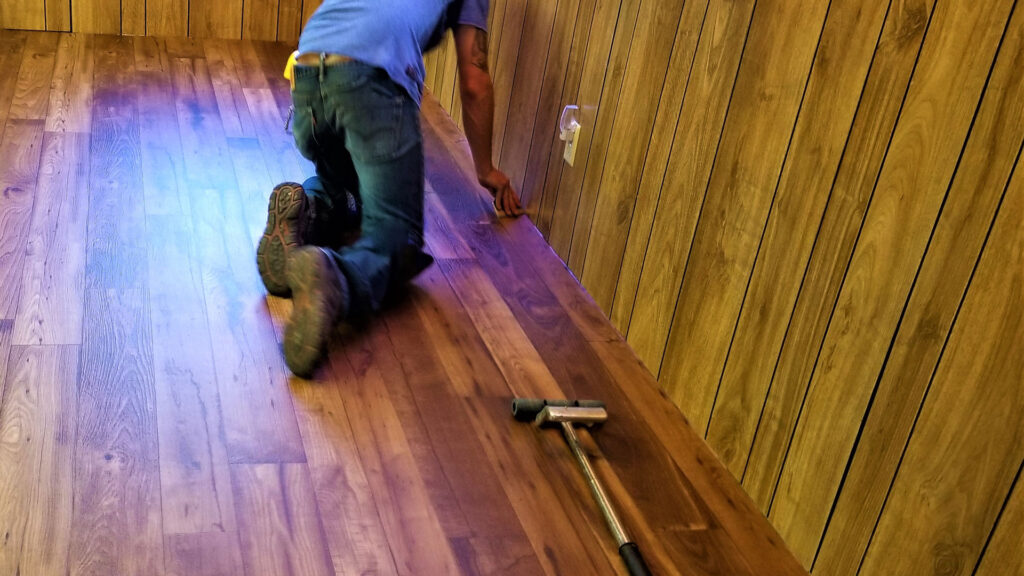Temperature and humidity levels may cause your flooring to expand or contract as the seasons change. And the extent of these expansions and contractions also depends on the type of flooring you have installed within your home. Because of these fluctuations, your flooring needs to be installed with expansion gaps that account for the size of the area the flooring is being installed in, the type of flooring being used, and the climate in which the home is located.
At E_M Custom Flooring & Installations, our flooring experts take all of that information into consideration prior to beginning an installation, ensuring that your flooring stands the test of time.
Learn More: Preparing for a Hardwood Flooring Installation
The Importance of Wood Acclimation Before Installation
Solid Hardwood Flooring
Solid hardwood flooring tends to expand and contract more than most other types of flooring. The necessary expansion gaps depend on the species of hardwood as well as the factors mentioned earlier. Generally, for a ¾” hardwood, a ¾” expansion space is left between the flooring and its surrounding walls and other objects outside of its perimeter.
Learn More: The Different Cuts of Hardwood Flooring

Engineered Hardwood Flooring
Due to engineered hardwood flooring’s construction properties, this type of flooring usually does not necessitate expansion gaps. The intricacies of engineered hardwood flooring’s manufacturing process essentially build the expansion gaps directly into the planks. Additionally, its multi-layer backing makes engineered wood flooring more resistant to the expanding and contracting caused by changes in humidity levels.
Learn More: Is Engineered Hardwood Flooring a Smart Choice?

Laminate Flooring
Laminate flooring typically includes installation spacers which are placed between the flooring planks to achieve the properly sized expansion gaps. This allows for the generally recommended ¼” expansion space between the flooring and its surrounding walls. The ¼” expansion space may vary depending on the flooring installation specifications and other outside factors. These rules of thumb may also be applicable with vinyl flooring installations. At E_M Custom Flooring & Installations, we also leave precisely sized expansion gaps for any other objects the flooring may be touching such as pipes, moldings, and cabinets.
Learn More: Have You Considered Laminate Flooring?
Flooring Installation Expertise
With more than 75 years of experience, the experts at E_M Custom Flooring & Installations have satisfied customers throughout the greater New York area. Contact us today or stop by our show room so we can help you get started on your upcoming flooring project.

